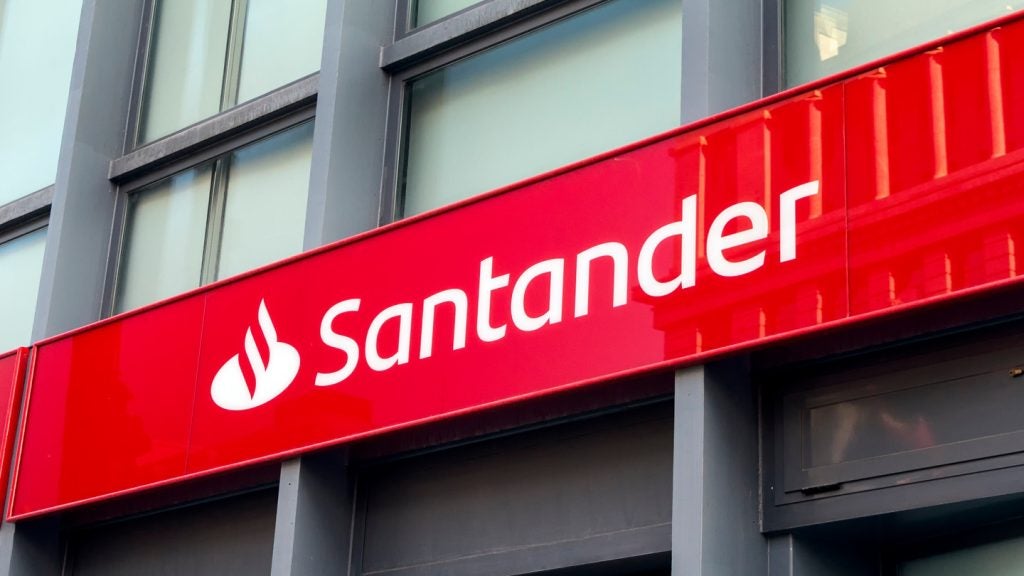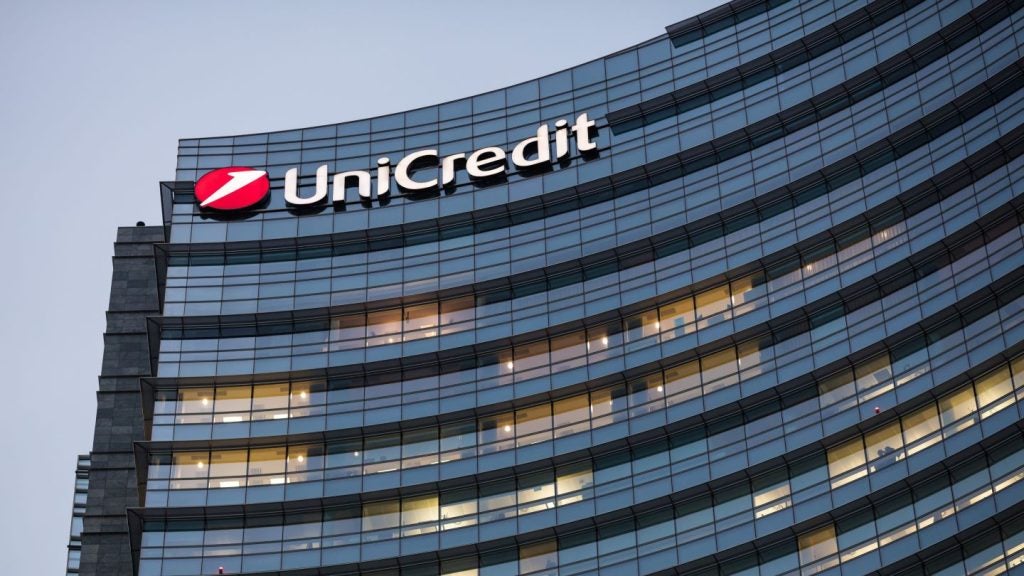retail banking has contributed to revenue stability. But while its
domestic Danish market is among the healthiest in Europe, Danske
has not escaped the worst of the wider market turmoil, as its head
of investor relations, Martin Gottlob, tells Douglas
Blakey.
 With a share price fall this
With a share price fall thisyear of more than 50 percent, third-quarter profits below analysts
expectations, an expensive Danish guarantee programme to part-fund
and the fall-out of problems associated with its take over of Sampo
Bank, Danske Bank has not endured an easy 2008.
And having cut its full-year profits
growth forecast, with question marks hanging over deteriorating
credit quality and economic storm clouds hovering over the
countries in which it operates, the short-term outlook is
challenging.
But Denmark’s largest bank by assets and
one of the largest in the Nordic region can flag up revenue
stability thanks to its ongoing focus on retail banking, with
strong improvements in net interest income, mainly from lending
growth and wider lending margins.
Danske, with around 5 million retail
customers in the Nordic region, Baltic region, Ulster and the
Republic of Ireland, now forecasts full-year profit before credit
losses, trading and insurance income up 5 percent compared to 2007,
having previously forecast a rise of 10 to 20 percent.
In the first nine months of the year, the
bank posted net profit down 39 percent to DKK6.9 billion ($1.16
billion), mainly because of increasing credit-loss expenses.
In particular, the bank suffered
significant deterioration in Denmark and its Irish operations,
mainly relating to corporate and commercial property exposures. And
then there was the fall-out from the failure of US investment bank
Lehman Brothers, with third-quarter results skewed by
Lehman-related losses of DKK558 million.
“We do not expect to see many more Lehman
Brothers, at least we hope so,” said Danske’s head of investor
relations Martin Gottlob, in an interview with RBI. “If
you take out the Lehman-related losses, the underlying
nonperforming loan ratio is up by only 6 basis points, from 60
basis points to 66 basis points in the quarter, a much more modest
increase.”

US Tariffs are shifting - will you react or anticipate?
Don’t let policy changes catch you off guard. Stay proactive with real-time data and expert analysis.
By GlobalDataDouble whammy
Looking ahead, Danske will be hit by the
double whammy of rising loan losses expected in a number of
markets, including Denmark, Finland and Ireland, and expenses
incurred due to the bank’s participation in the Danish deposit
guarantee scheme.
He said: “The price we have to pay is high
but it was a necessity to get the guarantee and it is the price we
have to pay.”
In October, Danish banks had agreed to pay
up to DKK35 billion over the next two years – with Danske
contributing around one-third of the liquidation fund – in exchange
for a government-backed unlimited guarantee on deposits and senior
debt. Gottlob added that the bank expected further write-downs in
the fourth quarter.
“Credit quality is deteriorating in most
countries we operate,” Gottlob added. “Most of Europe will see some
kind of downturn and it will be very surprising if that does not
lead to more loan losses.”
Since the Danish protection scheme was
announced, there has been an immediate effect on access to
funding.
“It changed from day one and since then we
have seen an easing of conditions but prices are still on the high
side,” he said.
But in terms of the Danish scheme, banks
cannot pay dividends, make share buy- backs or establish or renew
share option schemes for managers.
The loss of a dividend led to an immediate
shake-up of the Danske shareholders register, with a number of
shareholders selling their holdings.
“We had some reaction… we know we had some
shareholders who cannot invest in shares which pay no dividend but
it has not been dramatic,” Gottlob explained.
The lack of a dividend will, however, see
an improvement in an already healthy core Tier 1 ratio of 8.7
percent, while the state guarantee on all deposits and senior debt
will support its liquidity management going forward. It will also
give the banking sector the necessary time to reorganise the
longer-term funding structure for the entire banking sector.
As for the varying types of government
guarantee systems introduced in the countries in which Danske
subsidiaries operate, Gottlob declined to pass judgment on which
guarantee will work best.
On the UK and Ireland, which have
competing guarantee programmes – Danske’s Northern Bank and
National Irish Bank franchises operate north and south of the Irish
border, respectively – he was succinct: “We have had tough
competition from UK and Irish banks in the past and that will not
change.”
 Danske’s current grip on the
Danske’s current grip on the
Danish retail market, is however likely to preclude it from taking
an active role in an anticipated fresh round of market
consolidation. The Danish banking sector, which totalled more than
1,000 financial institutions in the 1960s, still numbers around 140
banks and savings banks. In the third quarter, Danske’s share of
lending, including mortgage loans, was 29.8 percent while its share
of deposits was 29.5 percent (see bar chart right).
“We will most likely see a further round
of consolidation in the next couple of years but for competition
reasons it will be difficult for us to participate,” Gottlob
said.
While Danske forecasts Danish house prices
will fall about 5 percent in both 2008 and 2009, unemployment is
historically low, and the average loan-to-value (LTV) of a mortgage
at the bank is a modest 54 percent. Gottlob expects Danish mortgage
impairment charges to remain low, concluding that Danske’s mortgage
loans are still very secure and not likely to occasion large losses
in the coming year.
“Our retail business has showed a high
degree of robustness and we still have a good degree of trust with
our customers,” he explained.
Of particular note in the first nine
months of the year has been a combination of an 8 percent rise in
lending growth and widening lending margins more than offsetting
the pressure on deposit margins. Net interest income now represents
more than 60 percent of Danske’s total income.
As for product developments, investment
products have not been a line customers have been demanding in the
current climate. But the bank has enjoyed success with a discounted
mortgage product, available to customers seeking a low LTV home
loan.
A wave of negative
publicity
On the merger front, Danske’s most recent
major acquisition, the $4 billion deal to buy Sampo, resulted in a
most unwelcome wave of negative publicity. Sampo, the third-largest
bank in Finland, was acquired in February 2007 and brought Danske
1.1 million retail and 100,000 corporate customers, with Finnish
market shares in retail and corporate banking of 15 percent and 20
percent, respectively.
The deal also gave Danske full coverage
throughout the Nordic region, as well as gaining 270,000 customers
and 44 branches in the Baltic states of Estonia, Latvia and
Lithuania – but it brought an IT integration nightmare.
Analysts also criticised the cost of the
deal and slammed Danske for the time taken – 2010 is the estimate –
to derive synergies from the transaction.
Danske expects to achieve cost synergies
in both Finland and Denmark in the next two years and having spent
around DKK1 billion on integration costs this year, that figure is
expected to fall sharply in 2009.
Talking about Sampo-related problems,
Gottlob said: “Danske has waived around €10 million in fees. In the
summer, we decided to remove a number of fees normally charged for
a period of five months, by way of an apology.”
In particular, Sampo customers suffered
from technical problems linked with the introduction of a new
online banking system. A number of customers’ debit cards suddenly
stopped working. Card-related problems led to a flood of telephone
calls to the bank, and if that was not enough, the Sampo website
failed under the flood of customer traffic.
Press coverage of the problems was severe,
with The Bank of Finland and the Financial Supervision Authority
wading into the debate to discuss how possible monetary losses
suffered by customers should be compensated. Inevitably, Sampo
suffered a significant loss of retail customers.
“The migration of the IT system had errors
and we are not proud of the way we handled this,” Gottlob
explained. “We lost some 35,000 customers, around 3 percent of our
retail customer base.”
And while the process to regain the
confidence of the Finnish market will take some time, Gottlob is
cheered by news of improving volumes, with lending up 3 percent in
the last quarter and deposits at the same level.
In surveying the various markets in which
Danske operates, Gottlob observes very noticeable differences
concerning fees and customer satisfaction.
“In general, banks are not less popular
than before the market crisis… the average Nordic customer is more
satisfied with their bank than, say in the UK, and we have reduced
our fees over the years, which are now considered to be cheap,” he
added.
FEES
Large is cheap
The release on 7 November by the Danish
Consumer Council (DCC) of a survey into retail banking fees charged
by 24 of the country’s largest consumer banks reinforced Danske’s
new-found image as a bank with competitive fees. Danske came out
top in the analysis as the cheapest bank.
The DCC examined a bank customer’s total
fees over a lifetime – that is, from when the customer is 18 to 80
years old. The report concluded that Danske is the cheapest bank
for those who rent their homes, while it scored second place in the
survey for homeowners.
“It’s no secret that we’ve had an image as
a large, expensive bank, so I’m very pleased that the analysis has
turned this around. We’ve worked on our prices over the past few
years and there has been a great deal of change, but I wouldn’t
have predicted that we would become the cheapest bank,” said the
bank’s executive vice-president of business development, Rina
Asmussen.
The report’s most eye-catching finding was
that the larger banks are not the most expensive, something which
surprised the DCC itself.








